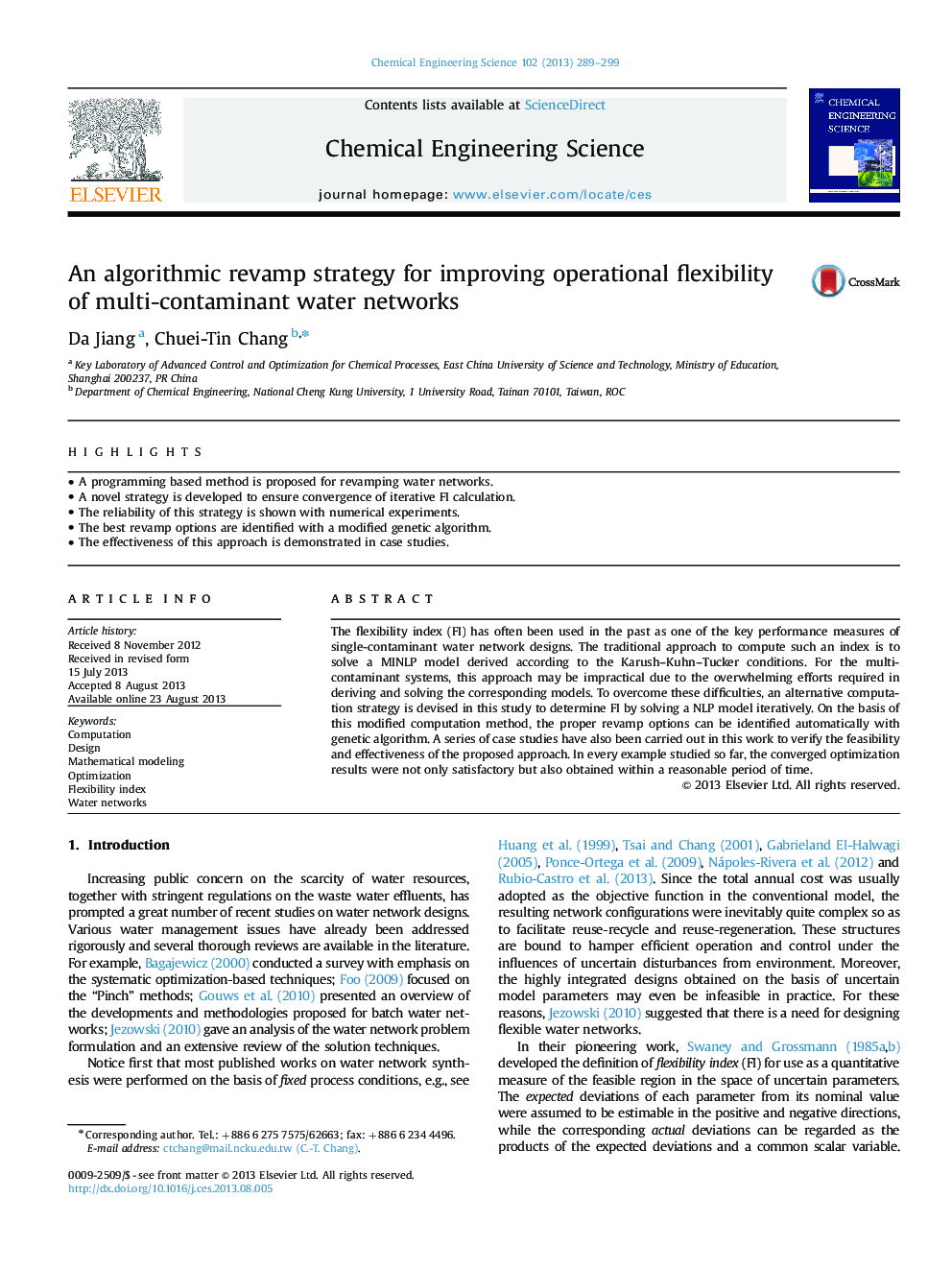| Article ID | Journal | Published Year | Pages | File Type |
|---|---|---|---|---|
| 6591804 | Chemical Engineering Science | 2013 | 11 Pages |
Abstract
The flexibility index (FI) has often been used in the past as one of the key performance measures of single-contaminant water network designs. The traditional approach to compute such an index is to solve a MINLP model derived according to the Karush-Kuhn-Tucker conditions. For the multi-contaminant systems, this approach may be impractical due to the overwhelming efforts required in deriving and solving the corresponding models. To overcome these difficulties, an alternative computation strategy is devised in this study to determine FI by solving a NLP model iteratively. On the basis of this modified computation method, the proper revamp options can be identified automatically with genetic algorithm. A series of case studies have also been carried out in this work to verify the feasibility and effectiveness of the proposed approach. In every example studied so far, the converged optimization results were not only satisfactory but also obtained within a reasonable period of time.
Related Topics
Physical Sciences and Engineering
Chemical Engineering
Chemical Engineering (General)
Authors
Da Jiang, Chuei-Tin Chang,
